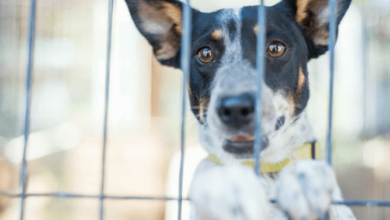Common Mistakes When Using DJI Crop Spraying Drones in Auburn

Using a DJI crop spraying drone can make farming much easier. These drones save time, cover more ground, and guarantee even spraying. But, as with any new technology, mistakes can occur, especially when operators are still learning the ropes. In Auburn, where farming is a big part of the community, getting the most out of a DJI crop spraying drone is important for efficiency and productivity.
Let’s look at some common mistakes people make when using DJI Crop Spraying Drones in Auburn and how to avoid them.
Skipping Pre-Flight Checks of DJI Crop Spraying Drones in Auburn
One of the biggest mistakes users make is forgetting to run pre-flight checks. The DJI crop spraying drone, like any complex equipment, needs a quick inspection before taking off. Pre-flight checks include making sure batteries are fully charged, that there’s enough pesticide or fertilizer in the tank, and that all parts of the drone are securely in place.
Skipping these checks can lead to malfunctions or even accidents mid-flight. For example, a low battery can cause the drone to land unexpectedly. Or, if there’s not enough spray in the tank, the drone may run out before covering the entire field. Taking a few minutes to check these issues helps prevent these issues and keeps the operation running smoothly.
Incorrect Calibration of Spray System
Another common error is failing to calibrate the spray system correctly. Calibration is essential to make sure the drone sprays evenly and at the right amount. An incorrectly calibrated drone may apply too much or too little pesticide or fertilizer, which can harm crops or reduce effectiveness.
Many users make this mistake by skipping the calibration or using default settings that don’t match their specific field requirements. Before starting, it’s important to measure and adjust the spray settings based on crop type, weather, and field size. This guarantees the drone applies the spray evenly and precisely, giving better results.
Not Monitoring Weather Conditions
Weather plays a big role in crop spraying. Wind, rain, and extreme temperatures can affect how the spray lands on crops. A common mistake is flying the drone without checking the weather first. Flying in windy conditions, for instance, can blow the spray off course, leading to uneven application or wasting chemicals.
In Auburn, the weather can change quickly, so it’s best to check the forecast before each flight. If it’s windy or rainy, rescheduling the flight for a calmer day will give better results. Monitoring weather conditions makes sure the spray reaches its target effectively and minimizes waste.
Ignoring Drone Altitude Settings
Setting the drone’s altitude is key to effective spraying, yet many users overlook this detail. Flying too high can cause the spray to disperse unevenly due to wind while flying too low might lead to crop damage. Each crop and pesticide type may require a different altitude for optimal coverage.
Some users stick to the default altitude setting, which might not be suitable for their field. Instead, adjusting the altitude based on the type of crop, the weather, and the drone’s capabilities will improve the quality of the application. Taking time to set the correct altitude makes sure the spray is distributed evenly, reducing both waste and crop damage.
Overloading the Drone’s Tank
Many users are tempted to fill the drone’s tank to maximum capacity to reduce refill trips. However, overloading the tank can put extra strain on the drone’s motors and reduce battery life. DJI Crop Spraying Drones in Auburn have a specific weight limit, and exceeding it affects flight performance.
Instead of filling the tank to the brim, stick to the recommended capacity. This not only helps maintain battery efficiency but also guarantees the drone flies smoothly and safely. Overloading may seem like a time-saver, but it can actually lead to more issues, like reduced flight times and damage to the drone.
Neglecting Regular Maintenance
Skipping regular maintenance is another mistake that can reduce a drone’s efficiency and lifespan. Dust, debris, and chemical residue can build up on the drone after each use, especially when working in agricultural fields. Neglecting to clean the drone, check the rotors, and inspect the spray nozzles can cause parts to wear out faster.
Setting aside time for maintenance after each flight can extend the drone’s life. Cleaning the nozzles, checking the rotor blades, and inspecting the battery connections help keep the drone in top shape. Regular maintenance not only upgrades performance but also prevents costly repairs down the line.
Conclusion
Using DJI crop spraying drones in Auburn can make a big difference in farm management. Avoiding common mistakes helps get the most out of this technology, guaranteeing efficient spraying and healthy crops. With careful planning and maintenance, DJI drones can be powerful tools for modern agriculture.
Visit Hinterland Drones to take your farm management to the next level with advanced technology!





